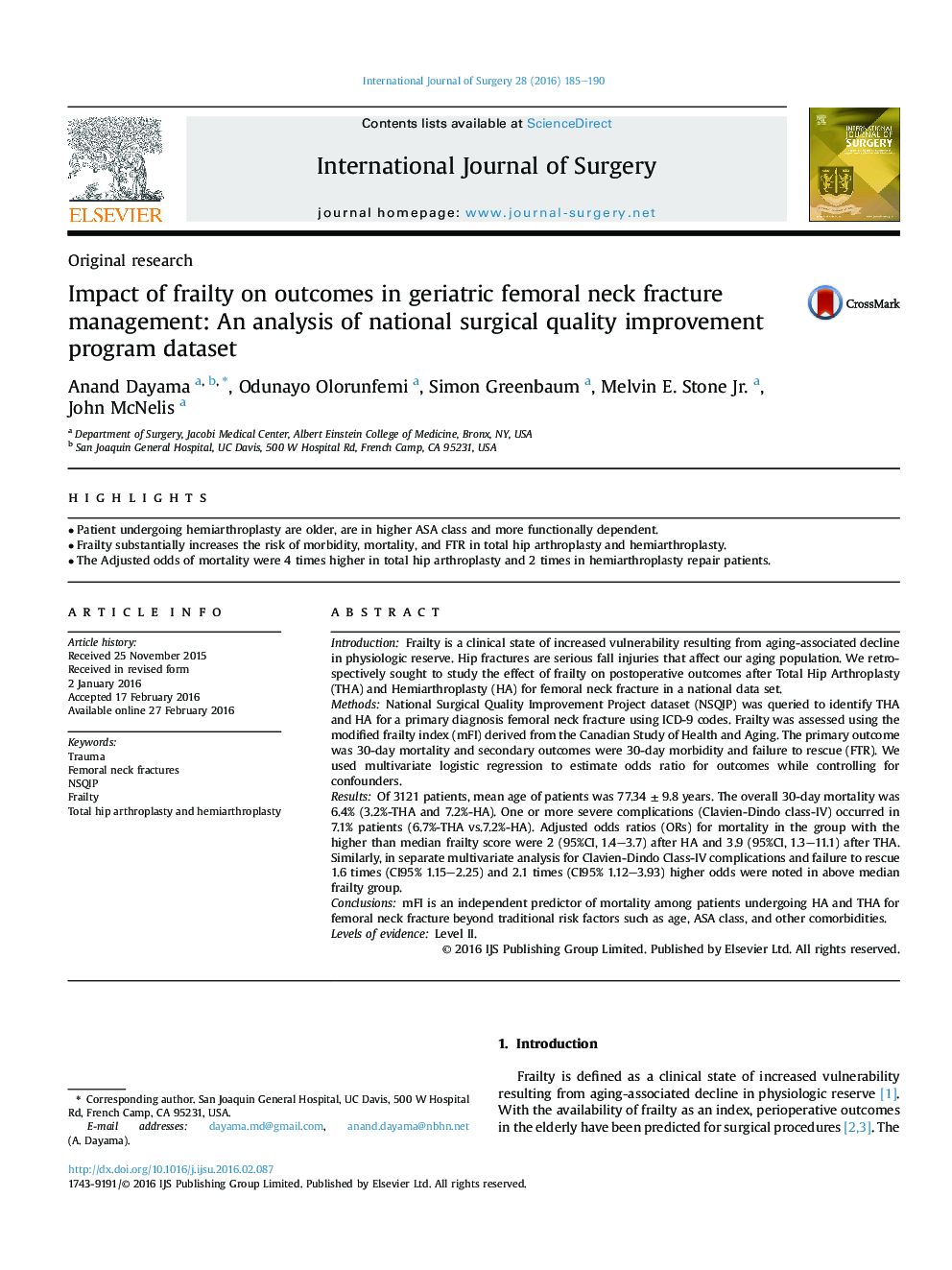| کد مقاله | کد نشریه | سال انتشار | مقاله انگلیسی | نسخه تمام متن |
|---|---|---|---|---|
| 4285474 | 1611959 | 2016 | 6 صفحه PDF | دانلود رایگان |
• Patient undergoing hemiarthroplasty are older, are in higher ASA class and more functionally dependent.
• Frailty substantially increases the risk of morbidity, mortality, and FTR in total hip arthroplasty and hemiarthroplasty.
• The Adjusted odds of mortality were 4 times higher in total hip arthroplasty and 2 times in hemiarthroplasty repair patients.
IntroductionFrailty is a clinical state of increased vulnerability resulting from aging-associated decline in physiologic reserve. Hip fractures are serious fall injuries that affect our aging population. We retrospectively sought to study the effect of frailty on postoperative outcomes after Total Hip Arthroplasty (THA) and Hemiarthroplasty (HA) for femoral neck fracture in a national data set.MethodsNational Surgical Quality Improvement Project dataset (NSQIP) was queried to identify THA and HA for a primary diagnosis femoral neck fracture using ICD-9 codes. Frailty was assessed using the modified frailty index (mFI) derived from the Canadian Study of Health and Aging. The primary outcome was 30-day mortality and secondary outcomes were 30-day morbidity and failure to rescue (FTR). We used multivariate logistic regression to estimate odds ratio for outcomes while controlling for confounders.ResultsOf 3121 patients, mean age of patients was 77.34 ± 9.8 years. The overall 30-day mortality was 6.4% (3.2%-THA and 7.2%-HA). One or more severe complications (Clavien-Dindo class-IV) occurred in 7.1% patients (6.7%-THA vs.7.2%-HA). Adjusted odds ratios (ORs) for mortality in the group with the higher than median frailty score were 2 (95%CI, 1.4–3.7) after HA and 3.9 (95%CI, 1.3–11.1) after THA. Similarly, in separate multivariate analysis for Clavien-Dindo Class-IV complications and failure to rescue 1.6 times (CI95% 1.15–2.25) and 2.1 times (CI95% 1.12–3.93) higher odds were noted in above median frailty group.ConclusionsmFI is an independent predictor of mortality among patients undergoing HA and THA for femoral neck fracture beyond traditional risk factors such as age, ASA class, and other comorbidities.Levels of evidenceLevel II.
Journal: International Journal of Surgery - Volume 28, April 2016, Pages 185–190
